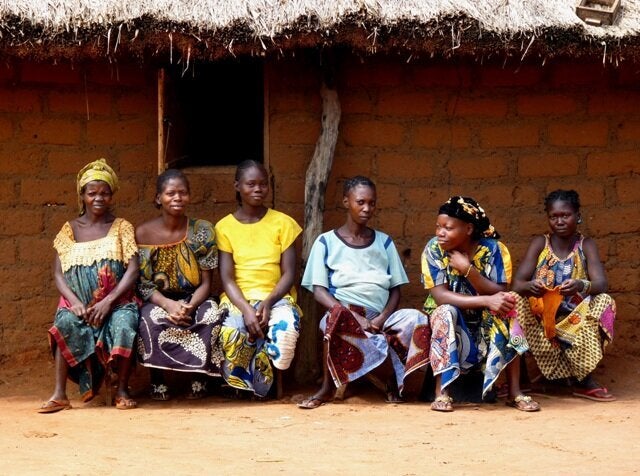This week marks 100 days since the report of the high level panel on the Post-2015 Development Agenda. As eminent persons and development academics once again turn their thoughts to what will replace the Millennium Development Goals (MDGs), it's worth remembering what these debates really mean for mothers and babies in Sub-Saharan Africa.
More than 800 women die from pregnancy or childbirth-related complications around the world every day. 99% of those maternal deaths occur in developing countries and most could have been prevented. In 2000 the international community adopted Millennium Development Goal 5, to reduce maternal mortality by three quarters between 1990 and 2015. Since then, incredible progress has been made with maternal deaths decreasing by 47% worldwide. That represents many millions of women and babies saved. But nowhere is the urgency to deliver for the millions more left behind than the country where I work, Central African Republic.
The Central African Republic (CAR) has one of the world's highest maternal mortality ratios - the number of women who die during pregnancy or child birth - at 890 deaths per 100,000 live births. A woman's lifetime risk of maternal death in CAR is 1 in 27, compared to 1 in 4,600 in the UK. Only 53% of births in CAR are attended by skilled health professionals, which can be the difference between life and death for a woman with complications during childbirth. Women outside the capital often give birth at home in unsanitary conditions, relying on untrained traditional birth attendants. According to Olga, an International Medical Corps midwife:
"Traditional birth attendants have a lot of influence with pregnant women, but they often have little or no formal training. They will encourage the mother to give birth at home. They wait until they can't deal with a problem anymore and only then will they bring the woman to the clinic, but it can often be too late and the mother or the baby will die."
But maternal care is more than just delivering babies.
"The biggest challenge is actually getting women to come to the health facility and use the services. In one village the health facility is only 3 miles away, but the women weren't using it. We have to educate the women and families about the importance of ante and postnatal consultations, and the benefits of giving birth at a health facility with a skilled midwife."
It is equally important to prevent pregnancies in young girls or pregnancies that are too close together.
"There is a poor level of education amongst women, particularly in the rural areas where we work. That is why you will see women with so many children; one woman in the village of Kagabando has 15 children."
Despite the political instability and fragile security situation in CAR, progress is being made thanks to the efforts of NGOs such as International Medical Corps and the support of donors such as the European Union. The maternal mortality ratio in CAR has reduced from 1,570 deaths per 100,000 live births in 2008 to 890 in 2011.
Yet, countries like CAR represent the greatest challenge for the international community to deliver on it's commitments around maternal health and the other MDGs. Poor infrastructure; limited capacity of the state, further undermined by the latest round of political upheaval and many other factors all make the mothers and babies in CAR amongst the very hardest to reach. It is vital that in the time remaining to the end of the MDGs in 2015 and for whatever replaces them, these people in the greatest need are not left behind.
